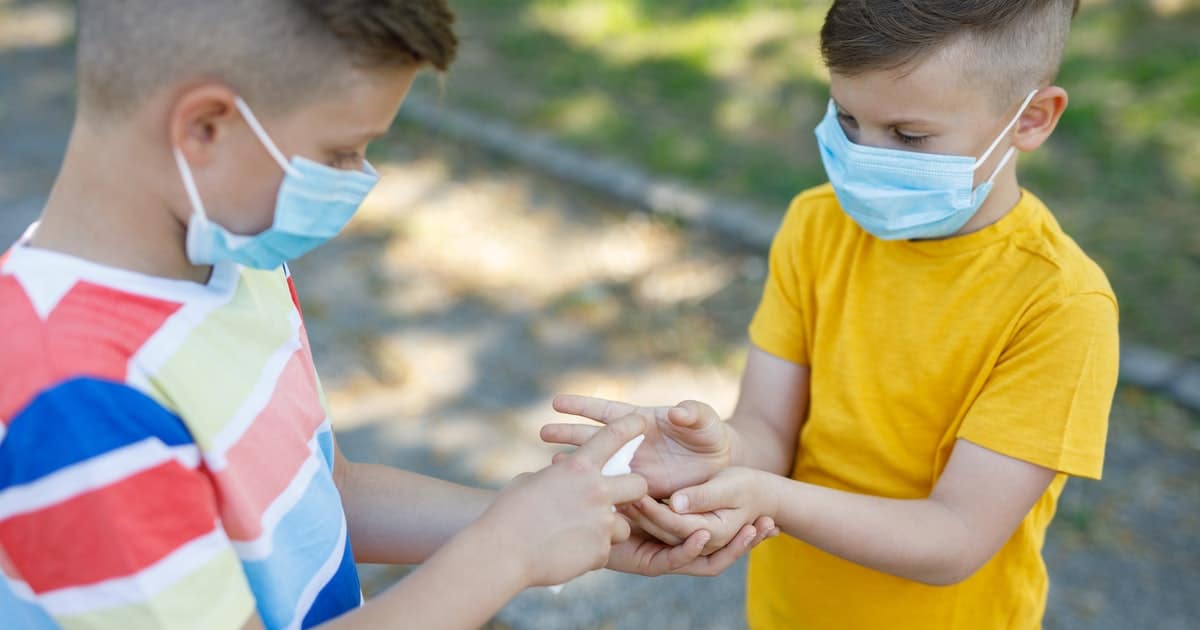Once upon a time in America, parents breathed a sigh of relief when their kids went back to school after a summer’s hiatus, content in the knowledge that for a good portion of the day their kids would be gainfully occupied, out of harm’s way and out of trouble.
Those were the good old days, before the COVID-19 pandemic introduced a whole new level of Nanny State authoritarianism to our daily lives, locking down communities, forcing kids out of the schoolroom and into virtual classrooms, leaving vast swaths of the work force dependent on government welfare, while pushing other segments into a work-from-home model, and generally subjecting us to an increasingly obnoxious level of intrusion by the government into our private lives.
Now, after almost 18 months away from a physical classroom, students are heading back to school.
Here’s what they can expect.
From the moment a child enters one of the nation’s 98,000 public schools to the moment he or she graduates, they will be exposed to a steady diet of:
– draconian zero tolerance policies that criminalize childish behavior,
– overreaching anti-bullying statutes that criminalize speech,
– school resource officers (police) tasked with disciplining and/or arresting so-called “disorderly” students,
– standardized testing that emphasizes rote answers over critical thinking,
– politically correct mindsets that teach young people to censor themselves and those around them,
– and extensive biometric and surveillance systems that, coupled with the rest, acclimate young people to a world in which they have no freedom of thought, speech or movement.
Young people in America are now first in line to be searched, surveilled, spied on, threatened, tied up, locked down, treated like criminals for non-criminal behavior, tasered and in some cases shot.
Nowadays, students are not only punished for minor transgressions such as playing cops and robbers on the playground, bringing LEGOs to school, or having a food fight, but the punishments have become far more severe, shifting from detention and visits to the principal’s office into misdemeanor tickets, juvenile court, handcuffs, tasers and even prison terms.
These outrageous incidents are exactly what you’ll see more of now that in-person school is back in session, especially once you add COVID-19 mandates to the mix.
Having police in the schools only adds to the danger.
Funded by the US Department of Justice, these school resource officers (SRO) have become de facto wardens in elementary, middle and high schools, doling out their own brand of justice to the so-called “criminals” in their midst with the help of tasers, pepper spray, batons and brute force.
The horror stories are legion.
One SRO was accused of punching a 13-year-old student in the face for cutting the cafeteria line.
That same cop put another student in a chokehold a week later, allegedly knocking the student unconscious and causing a brain injury.
In Pennsylvania, a student was tasered after ignoring an order to put his cell phone away.
When 13-year-old Kevens Jean Baptiste failed to follow a school bus driver’s direction to keep the bus windows closed (Kevens, who suffers from asthma, opened the window after a fellow student sprayed perfume, causing him to cough and wheeze), he was handcuffed by police, removed from the bus, and while still handcuffed, had his legs swept out from under him by an officer, causing him to crash to the ground.
Not even the younger, elementary school-aged kids are being spared these “hardening” tactics.
On any given day when school is in session, kids who “act up” in class are pinned facedown on the floor, locked in dark closets, tied up with straps, bungee cords and duct tape, handcuffed, leg shackled, tasered or otherwise restrained, immobilized or placed in solitary confinement in order to bring them under “control.”
Very rarely do the kids pose any credible danger to themselves or others.
Unbelievably, these tactics are all legal, at least when employed by school officials or school resource officers in the nation’s public schools.
This is what happens when you introduce police and police tactics into the schools.
Paradoxically, by the time you add in the lockdowns and active shooter drills, instead of making the schools safer, school officials have succeeded in creating an environment in which children are so traumatized that they suffer from post-traumatic stress disorder, nightmares, anxiety, mistrust of adults in authority, as well as feelings of anger, depression, humiliation, despair and delusion.
So what’s the answer, not only for the here-and-now—the children growing up in these quasi-prisons—but for the future of this country?
How do you convince a child who has been routinely handcuffed, shackled, tied down, locked up, and immobilized by government officials—all before he reaches the age of adulthood—that he has any rights at all, let alone the right to challenge wrongdoing, resist oppression and defend himself against injustice?
As I make clear in my book Battlefield America: The War on the American People, any significant reforms will have to start locally and trickle upwards.
For starters, parents need to be vocal, visible and organized and demand that school officials 1) adopt a policy of positive reinforcement in dealing with behavior issues; 2) minimize the presence in the schools of police officers and cease involving them in student discipline; and 3) insist that all behavioral issues be addressed first and foremost with a child’s parents, before any other disciplinary tactics are attempted.
If you want to raise up a generation of freedom fighters who will actually operate with justice, fairness, accountability and equality towards each other and their government, then remove the metal detectors and surveillance cameras, re-assign the cops elsewhere, and start treating our nation’s young people like citizens of a republic and not inmates in a police state penitentiary.
Reprinted with permission from Rutherford Institute.


